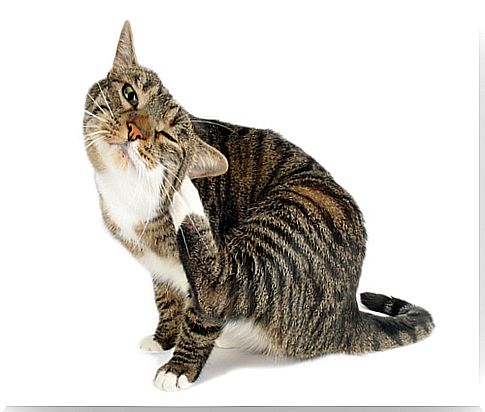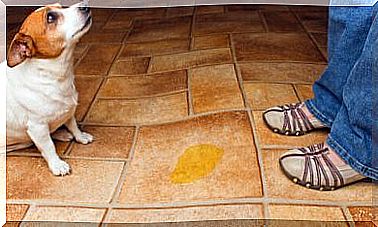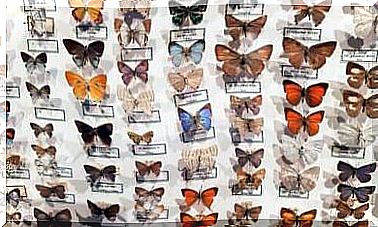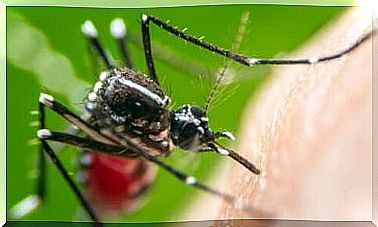Allergies In Cats

Allergy is simply an erroneous reaction by the immune system to an external body or substance that the immune system recognizes as harmful, but which actually isn’t. Cats, like people, can be allergic to anything, but there are certain substances that most often cause allergies in cats.
the flea bite
Or more precisely, the saliva, which the flea injects when drawing blood from your cat, is the cause of many allergies. The clinical manifestation of this allergy is skin inflammation (allergic dermatitis). The symptoms are itching and inflammation, so if you see your cat licking itself frequently in the same area or scratching itself, examine the area carefully.
In addition, there may be hair loss in the affected area and even scabs and scaling. If the allergy develops to this point, it’s a good idea to take your cat to the veterinarian so you can prescribe things to alleviate the allergy symptoms and get rid of the fleas.
food allergies

Food allergies are called intolerances, but they basically mean that your cat develops an immune hypersensitivity to a certain type of food. Food intolerances can appear suddenly and with foods that the cat has been consuming for a long time. This type of allergy may involve vomiting or respiratory failure. The best way to detect which foods are causing you allergies is to completely change your cat’s diet and introduce foods he hasn’t tried before, to make sure it’s a food allergy.
Keep on this diet for ten days until the condition disappears and then gradually re-introduce your usual food, until the food causing the allergy is detected. To put this process into practice, it’s a good idea to make sure the cat doesn’t eat anything outside of its usual diet. Once the food responsible for the allergy is detected, it is necessary to remove it from the cat’s diet, trying to introduce the protein, vitamin or carbohydrate contribution that this food provided, through new foods.
Allergy to plastic
Plastic is another substance that can produce frequent allergies. If your cat has severe lesions on the head, face, lips, or snout, it is likely that the container he eats is giving him an allergy. In this case, replace the container with one made of glass, ceramic or stainless steel to avoid allergic reaction.
excessive alopecia

Excessive alopecia means that your cat washes too much, which causes the fur to weaken and the skin to inflame. This reaction can happen from a variety of causes, such as stress, but it can also have an allergic basis. This disease is bothersome because it causes itching, inflammation and shedding of fur, but it is not dangerous to your cat’s health.
The best thing to do, if the disease is detected, is to take the cat to the vet, who will tell you the diagnosis and the proper care you should have with the cat. There are cat breeds that are particularly prone to this type of allergy, such as Siamese cats, Burmese cats, Oriental cats and Abyssinian cats.
Allergies in cats to humans
Just as there are people allergic to cat hair26, there are cats allergic to humans. Cats are more likely to develop this type of allergy if they are asthmatic. This mainly causes coughing, sneezing and shortness of breath, so the cat will try to get into a posture that improves its ventilation and helps it breathe.
Asthmatic attacks can last for several minutes and can be caused by house dust, cigarette smoke, dandruff, the flaky skin we produce or some perfume, air freshener, or cleaning product. If you notice that your cat has breathing difficulties and gets into awkward postures in order to breathe, take your cat to the veterinarian so that it can be properly cared for.
Is there any way to prevent allergy?
There is no way to prevent allergies, but there are ways to prevent allergies from getting worse or their symptoms from manifesting. For this, it is best to carry out regular flea controls on your cat throughout the year, provide him with hypoallergenic diets (the best are commercial pet foods developed based on hydrolyzed proteins), give him fatty acids to control inflammation and itching, prevent or control skin infections and wounds, and use medications to lessen the allergic response.
Additional measures may be: bathing the cat frequently or changing the sand in the box to sand that does not have an odor, depending on the type of allergy your cat has.









